China’s Dirty Water Leads to Protests, Some Reform
GlobeScan Survey Reflects Country’s Need For Dire Action, More Information
By Nadya Ivanova
Photographs by Greg Girard/Contact Press Images
Circle of Blue
More than two weeks after demonstrators peacefully protested pollution in China’s Fujian province, 10,000 villagers and some 2,000 riot police in the area violently clashed over the rancid effluent and foul smells from a wastewater treatment plant. The protest this month is the latest confrontation in a wave of social unrest over industrial practices that has drawn attention to some of the world’s dirtiest rivers and lakes and led to public calls for China to dramatically strengthen environmental safeguards.
Protests over water quality in China are now occurring with such frequency, say China specialists and environmental advocates, that they signal an awakening of public and government conscience about the environment. They have also led to improvements last year in Chinese water quality statutes.
To a remarkable extent, the public outcry over water pollution in China coincides with concerns expressed by hundreds of Chinese in a recent global public opinion survey on fresh water. The poll, the largest survey of global public opinion on fresh water to date, was published in August by Circle of Blue, the international news and science organization based in Michigan, and GlobeScan, a global opinion survey company with offices in Toronto and London.
Researchers interviewed more than 15,000 people in 15 countries. The independent poll, supported with underwriting from the Molson Coors Brewing Company, found that Chinese residents see water pollution as the country’s most important environmental concern. Some 67 percent of Chinese respondents consider it to be a very serious problem, more pressing than climate change and air pollution.
“We found very significant concern among the Chinese people about water quality and access to clean water,” said Rob Kerr, vice president of GlobeScan and one of the survey’s principal researchers. “The data show that the Chinese are aware of the condition of their waters and understand action is needed to improve conditions.”
Indeed, the citizen action this month to confront discharges from a tannery and an oil refinery in Fujian follows two similar incidents that flooded news headlines worldwide last month. In August, tensions rose after students in the central Hunan province and 615 children in the northern Shaanxi province tested positive for high lead levels.
Those events, in turn, were preceded by protests in front of Chinese oil and chemical plants in recent years. Guangdong recently relocated a controversial oil refinery from Nansha in Guangzhou. And two years ago, a planned chemical plant in Xiamen city in Fujian was forced to move after more than 10,000 people marched to oppose its construction in a residential community.
“These protests can be seen in a positive light,” said Dr. Jennifer Turner, director of the China Environment Forum (CEF) at the Woodrow Wilson International Center for Scholars in Washington, D.C. “They show how Chinese citizens are becoming aware that water pollution is getting worse and that they have a right to clean water.”
Momentum for Change
Just how much momentum China’s nascent environmental movement has built is not completely clear, say authorities in and outside the country. Though China’s notoriously dirty air and contaminated waters are well-known to the country’s more than 1 billion residents, citizens have previously been reluctant to engage in public actions that influence policy.
More recently, though, a slow change of the political culture about the environment and the more frequent pollution accidents accompanying China’s rapid economic growth have opened space for more protests in China. Citizens have called attention to the links between pollution and deteriorating public health. They have started blowing off steam over the strong state-corporate ties, the overwhelming local official protectionism, and the lack of effective alternative grievance relief channels. Independent authorities note that the increased activity is elevating the environment, and water issues in particular, to a much higher political priority in China.
“I think that water is a very emotional topic for people,” Turner said. “It could actually be one where we’re going to see a lot of progress in terms of pushing political change in China — from strengthening laws to giving citizens more voice to greater political space for Chinese NGOs to work on water issues.”
Authorities Awake to Protests Against Pollution
Deteriorated conditions are particularly dire in China’s rural areas, where many of the country’s industries have been relocated and where social unrest over unresolved pollution problems is rapidly increasing. According to Pan Yue, the deputy minister of China’s Ministry of Environmental Protection, in 2005 alone there was a 29 percent increase in environmental protests. Rough estimates by the China Environment Forum show that on average 5,000 environmental protests now occur in China annually.
In Fujian, people stormed the streets over fears that inorganic substances in contaminated water are responsible for the alarmingly high cancer rates in the area. In a country notorious for its “cancer villages,” where cancer rates are much higher than average, health fears are often the immediate catalysts for environmental strikes.
But experts say that the social unrest is as much a reaction to the health hazards of industrialization as it is a frustration with the local political reality in China that leaves citizens and villages with the keen sense they are powerless. According to the Circle of Blue-GlobeScan survey, despite the increased information flow in China, Chinese respondents do not feel empowered as individuals to address water problems. An overwhelming 88 percent of those polled said that they need more information to be able to do their part in protecting water.
A government study seemed to confirm their concerns. As the recent anti-pollution protests in Fujian unfolded, said the study, local authorities withheld information about polluters from the public and Beijing. Only four out of 113 local governments cooperate in providing information to the state, the report said.
The overwhelming local protectionism of polluting industries unveils the tight alliance between officials and local industries, often triggered by the pressure on local authorities to show progress in developing the economy. In the 15 years of market economics, local governments prioritize industrial growth often at the expense of the environmental regulation. As environmental problems persist, social frustration builds up over the lack of effective alternative channels for complaint, the weak local enforcement of environmental laws and the lack of accountability of the private sector.
Chinese Activism Leads to New Water Quality Law
As the number of environmental protests grows, experts say, so may the central government’s attention to industrial pollution. The frequent water pollution accidents in China in recent years have prompted social responses that the government considers threatening to social stability. Government officials are now cautiously amending China’s environmental laws.
Among others, the November 2005 release of tons of benzene into the Songhua River after an explosion at a petrochemical plant triggered the revision of China’s Water Pollution Control Law in February 2008. The new act raised penalties, eliminated some loopholes and put environmental regulation as a measure of local government performance.
“I think that’s a very encouraging sign — to finally see what is now the strongest water pollution control that China has ever passed,” Turner said. “Expectations have been rising, and the challenge is the central government’s capacity to really push enforcement of a lot of their rules and regulations to clean up water.”
History of Industrial Pollution, Accidents
Certainly, there is a need for stronger laws and a cleaner Chinese environment. According to China’s top environmental authorities, one water pollution accident occurs every two to three days on average. The Ministry of Environmental Protection reported 1,221 environmental accidents in 2004, most of which related to water, according to research by the CEF. More than 70 percent of the rivers and lakes in the country and more than half of urban groundwater is severely contaminated.
Greg Girard, an internationally recognized photographer who was on assignment in July for Circle of Blue, documented in striking photographs the toll that industrial pollution takes on the Yellow River, where it flows through Inner Mongolia. His pictures show a heavily industrialized watershed where paper mills, one of the world’s largest steel factories and a fertilizer plant pour effluent into a river heavily fished by people for recreation.
“There’s this kind of resignation, a sense of fatalism about having to live near such a place,” Girard said in an interview with Circle of Blue.
Jingjing Liu, associate director of the Vermont Law School-Partnership for Environmental Law in China program, said the new water pollution control law increases public participation and lays the foundation for public interest cases. It contains “probably by far the most specific and clear provision in environmental legislation that says NGOs have an active role to play in environmental litigation in China,” Liu said.
New activism is also apparent. The Center for Legal Assistance to Pollution Victims, the first and only NGO in China that helps citizens bring their pollution cases to court, now operates in the country. China has a new generation of influential environmentalists, including Ma Jun, a 41-year-old journalist and the head of the Institute of Public and Environment Affairs, which created China’s first online water pollution database.
“In reality, NGOs are going further than the law allows,” Liu said. “The law encourages, although not explicitly, NGO activity. So what’s going on in China is much more active than in the past, although how legal improvements will actually be enforced is still uncertain.”
Nadya Ivanovais a reporter, editor and producer at Circle of Blue, and a student at Northwestern University. Reach her at circleofblue.org/contact. Keith Schneider contributed to this story.
Survey analysis provided by GlobeScan in cooperation with Circle of Blue. Download the complete GlobeScan/Circle of Blue Report [pdf].
, a Bulgaria native, is a Chicago-based reporter for Circle of Blue. She co-writes The Stream, a daily digest of international water news trends.
Interests: Europe, China, Environmental Policy, International Security.

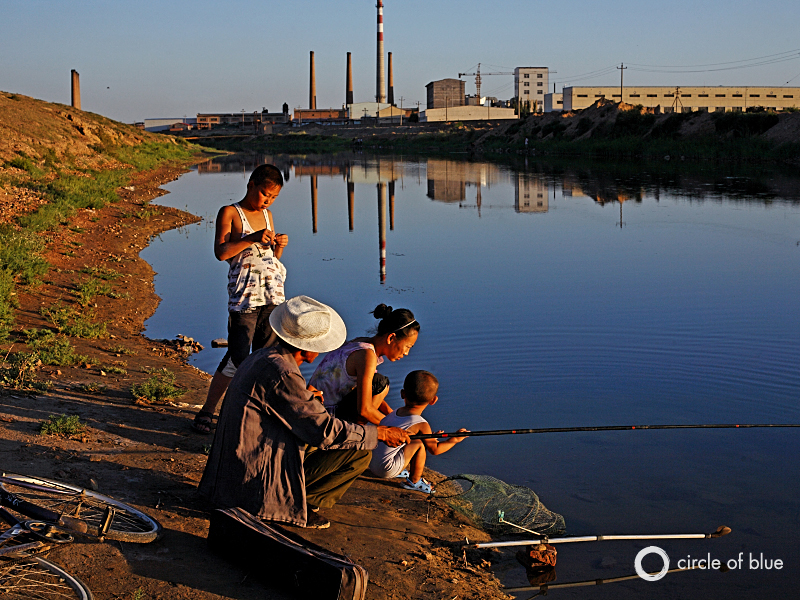

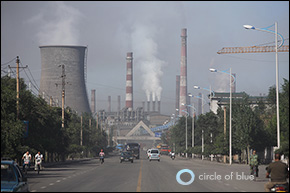

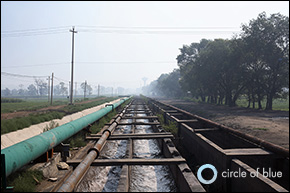

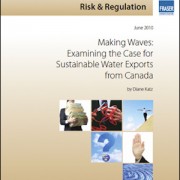




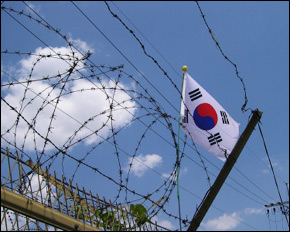

China showed the world (Olympics), of its historical inventions.
No doubt progress has also been made in the purifying of drinking water,
Contact has provided me with the opportunity to view a marketing plan for international use of a new water Plate.
I( will make the introduction should a government or industry leader respond
Kind Regards
???
Bill